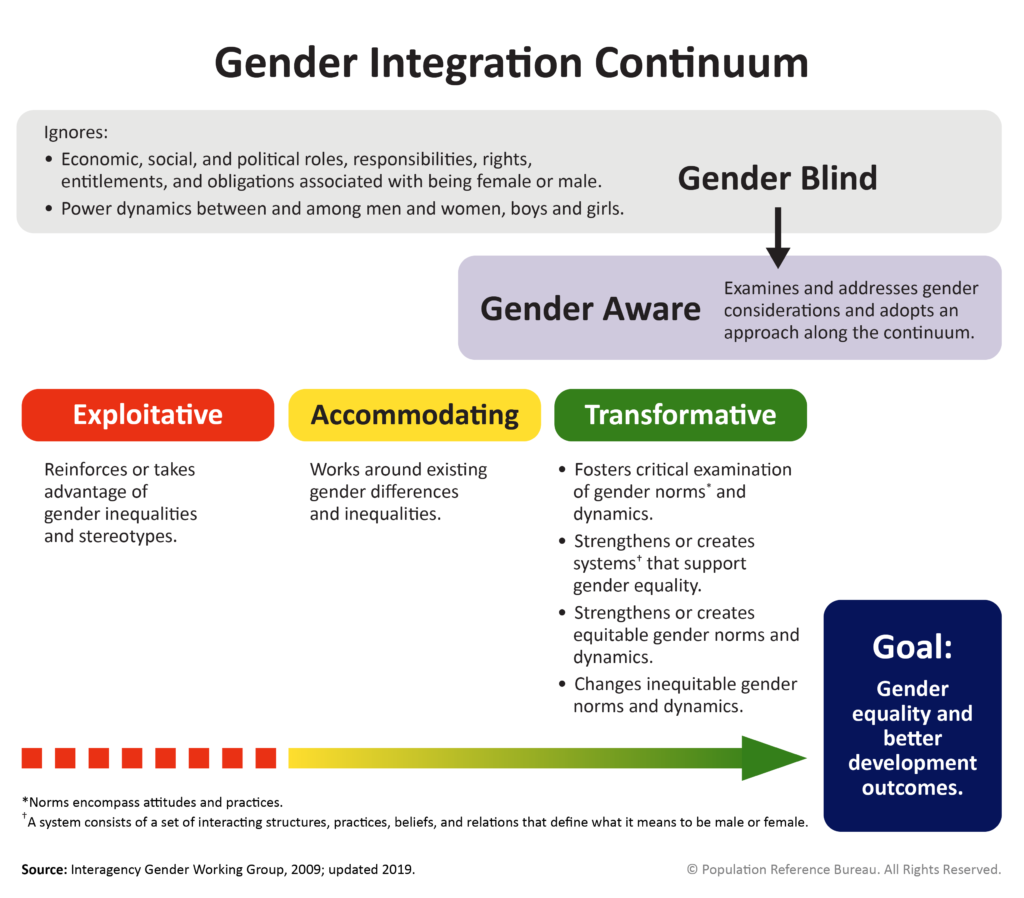Gender Perspectives Improve Reproductive Health Outcomes
This review assembles the latest data and updates the evidence as to what difference it makes when a gender perspective is incorporated into reproductive health programs.
Our training materials can be used to introduce a broad range of audiences and backgrounds to important concepts related to gender and health. Each training course focuses on one of five themes that complement the CORE Gender 101 agenda: Gender Integration, HIV + Sexuality, Safe Motherhood, Gender-Based Violence, and Constructive Male Engagement. The courses are designed to meet the geographic and technical needs of cooperating agencies, USAID Missions, and specific projects. Materials range from basics such as using a shared gender vocabulary and programmatic guidance, to user guides on how to conduct a gender analysis, to exercises for gender trainings. The trainings are geared to be used by anyone and with any audience, even those learning about gender for the first time!
Our popular Gender Integration Continuum framework is an important tool to assess how programs do (or do not) address gender and move them toward more gender-transformative actions. An updated User’s Guide for facilitating training on use of the continuum is available, along with other materials.
This review assembles the latest data and updates the evidence as to what difference it makes when a gender perspective is incorporated into reproductive health programs.
This brief describes the evolution of constructive men’s engagement (CME) over the last 15 years and makes the case for why it is critical in achieving improved reproductive health and gender equality. Four promising policy initiatives are described, as well as a process for advocating for policy change and recommendations for what policy and advocacy audiences need to consider (December 2009)
This publication provides organizations with a current resource on how to integrate a gender-equity approach into the design and implementation of reproductive health programs and includes case studies and worksheets.
This publication provides organizations with a current resource on how to integrate a gender-equity approach into the design and implementation of reproductive health programs and includes case studies and worksheets.
This new revision of the 2006 guide, is intended to help USAID program officers integrate gender-based violence (GBV) initiatives into their health sector portfolio during project design, implementation, and evaluation.
This new policy brief has been produced collaboratively by the Interagency Gender Working Group (IGWG) and the Interagency Youth Working Group (IYWG). It defines cross-generational sex, summarizes where it occurs, outlines the motivations behind the behavior, and recommends actions for policymakers and program managers. This brief builds on a lengthier publication, Addressing Cross-Generational Sex: A Desk Review of Research and Programs (PDF: 800KB), produced in August 2007.

